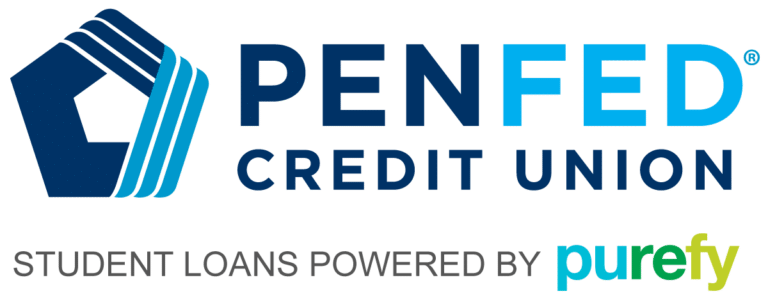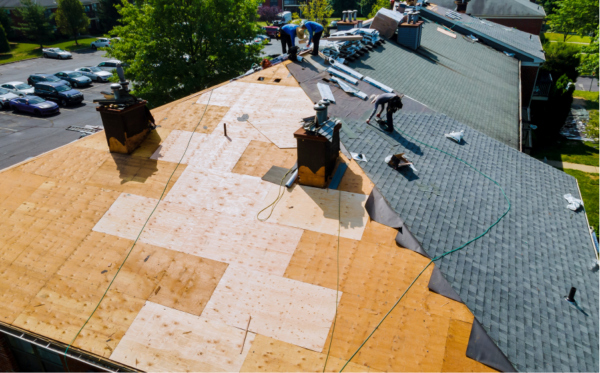The average student loan debt for college students is $39,351. However, some students — such as those attending expensive law or medical programs — end up with $300,000 or more in education debt.
Paying off such a large balance can be difficult and time consuming. For example, if you had $300,000 in federal student loans and paid them off on the standard 10-year repayment plan with a 6.22% interest rate, you’d end up with a monthly payment of $3,364 and a total repayment cost of $403,663.
The good news is that there are several strategies that could help you pay off your student loans more easily.
Here’s how to pay off $300,000 in student loan debt:
Refinance your student loansConsider using a cosigner when refinancingExplore income-driven repayment plansPursue loan forgiveness for federal student loansAdopt the debt avalanche or debt snowball method
1. Refinance your student loans
Student loan refinancing is the process of paying off your old student loans with a new loan. Depending on your credit, you might get a lower interest rate through refinancing — this could save you money on interest and potentially help you pay off your loan faster.
Or you could opt to extend your repayment term through refinancing to reduce your monthly payments and lessen the strain on your budget. Just keep in mind that choosing a longer term means you’ll pay more in interest over time.
Keep in mind: While you can refinance both federal and private loans, refinancing federal student loans will cost you access to federal benefits and protections — such as income-driven repayment plans and student loan forgiveness programs.
If you decide to refinance your student loans, be sure to consider as many lenders as possible. This way, you can find the right loan for your situation.
Here are Credible’s partners that offer refinancing for student loan balances of $300,000:
LenderFixed rates from (APR)Variable rates from (APR)Loan terms (years)Loan amounts

Credible Rating>
Credible lender ratings are evaluated by our editorial team with the help of our loan operations team. The rating criteria for lenders encompass 78 data points spanning interest rates, loan terms, eligibility requirement transparency, repayment options, fees, discounts, customer service, cosigner options, and more. Read our full methodology.
View details>
2.44%+1
2.24%+15, 7, 10, 15, 20$10,000 to $500,000
(depending on degree and loan type)Fixed APR:
2.44%+1Variable APR:
2.24%+1Min. credit score:
Does not discloseLoan amount:
$10,000 to $750,000Loan terms (years):
5, 7, 10, 15, 20Repayment options:
Immediate repayment, academic deferment, military deferment, forbearance, loans discharged upon death or disabilityFees:
Late feeDiscounts:
Autopay, loyaltyEligibility:
Must be a U.S. citizen or permanent resident and have at least $10,000 in student loansCustomer service:
Email, phone, chatSoft credit check:
YesCosigner release:
After 24 to 36 monthsLoan servicer:
Firstmark ServicesMax. Undergraduate Loan Balance:
$100,000 to $149,000Max. Graduate Loan Balance:
Less than $150,000Offers Parent PLUS Refinancing:
Yes

Credible Rating>
Credible lender ratings are evaluated by our editorial team with the help of our loan operations team. The rating criteria for lenders encompass 78 data points spanning interest rates, loan terms, eligibility requirement transparency, repayment options, fees, discounts, customer service, cosigner options, and more. Read our full methodology.
View details>
2.99%+2
2.94%+25, 7, 10, 12, 15, 20$5,000 to $300,000
(depending on degree type)Fixed APR:
2.99%+2Variable APR:
2.94%+2Min. credit score:
Does not discloseLoan amount:
$5,000 to $300,000Loan terms (years):
5, 7, 10, 12, 15, 20Repayment options:
Military deferment, forbearance, loans discharged upon death or disabilityFees:
Late feeDiscounts:
AutopayEligibility:
All states except for MECustomer service:
Email, phone, chatSoft credit check:
YesCosigner release:
After 24 to 36 monthsLoan servicer:
College Ave Servicing LLCMax. Undergraduate Loan Balance:
$100,000 to $149,000Max. Graduate Loan Balance:
Less than $300,000Offers Parent PLUS Refinancing:
Yes

Credible Rating>
Credible lender ratings are evaluated by our editorial team with the help of our loan operations team. The rating criteria for lenders encompass 78 data points spanning interest rates, loan terms, eligibility requirement transparency, repayment options, fees, discounts, customer service, cosigner options, and more. Read our full methodology.
View details>
2.16%+
2.11%+5, 7, 10, 15, 20$5,000 to $500,000Fixed rate:
2.44%+1Variable rate:
2.24%+1Min. credit score:
680Loan amount:
$5,000 to $500,000Cosigner release:
YesLoan terms (years):
5, 7, 10, 15, 20Repayment options:
Academic deferment, forbearance, loans discharged upon death or disabilityFees:
Late feeDiscounts:
AutopayEligibility:
Available in all states, except MS and NVCustomer service:
Email, phone, chatSoft credit check:
YesLoan servicer:
FirstMarkMax. undergraduate loan balance:
$500,000Max. graduate loan balance:
$500,000Offers Parent PLUS refinancing:
YesMin. income:
$65,000 (for 15- and 20-year products)

Credible Rating>
Credible lender ratings are evaluated by our editorial team with the help of our loan operations team. The rating criteria for lenders encompass 78 data points spanning interest rates, loan terms, eligibility requirement transparency, repayment options, fees, discounts, customer service, cosigner options, and more. Read our full methodology.
View details>
2.47%+3
2.39%+35, 7, 10, 12, 15, 20Minimum of $15,000Fixed APR:
2.47%+3Variable APR:
2.39%+3Min. credit score:
680Loan amount:
No maximumLoan terms (years):
5, 7, 10, 12, 15, 20Repayment options:
ForbearanceFees:
NoneDiscounts:
NoneEligibility:
Must be a U.S. citizen or permanent resident, have at least $15,000 in student loan debt, and have a bachelor’s degree or higher from an approved schoolCustomer service:
Email, phoneSoft credit check:
YesCosigner release:
NoLoan servicer:
MohelaMax. Undergraduate Loan Balance:
No maximumMax. Graduate Loan Balance:
No maximumOffers Parent PLUS Refinancing:
Yes

Credible Rating>
Credible lender ratings are evaluated by our editorial team with the help of our loan operations team. The rating criteria for lenders encompass 78 data points spanning interest rates, loan terms, eligibility requirement transparency, repayment options, fees, discounts, customer service, cosigner options, and more. Read our full methodology.
View details>
2.24%+7N/A5, 7, 10, 12, 15, 20Up to $300,000Fixed APR:
2.24%+7Variable APR:
N/AMin. credit score:
670Loan amount:
Up to $300,000Loan terms (years):
5, 7, 10, 15, 20Time to fund:
Usually one business dayRepayment options:
Academic deferral, military deferral, forbearance, death/disability dischargeFees:
NoneDiscounts:
AutopayEligibility:
Available in all 50 statesCustomer service:
Email, phoneSoft credit check:
YesCosigner release:
After 24 monthsMax. undergraduate loan balance:
$300,000Max. graduate balance:
$300,000Offers Parent PLUS loans:
YesMin. income:
None

Credible Rating>
Credible lender ratings are evaluated by our editorial team with the help of our loan operations team. The rating criteria for lenders encompass 78 data points spanning interest rates, loan terms, eligibility requirement transparency, repayment options, fees, discounts, customer service, cosigner options, and more. Read our full methodology.
View details>
3.05%+
3.05%+7, 10, 15$10,000 up to the total amount of qualified education debtFixed APR:
3.05%+Variable APR:
3.05%+Min. credit score:
670Loan amount:
$10,000 up to the total amountLoan terms (years):
7, 10, 15Repayment options:
Military deferment, loans discharged upon death or disabilityFees:
NoneDiscounts:
NoneEligibility:
Must be a U.S. citizen or permanent resident and have at least $10,000 in student loansCustomer service:
Email, phoneSoft credit check:
YesCosigner release:
NoLoan servicer:
AESMax. Undergraduate Loan Balance:
No maximumMax. Gradaute Loan Balance:
No maximumOffers Parent PLUS Refinancing:
Yes

Credible Rating>
Credible lender ratings are evaluated by our editorial team with the help of our loan operations team. The rating criteria for lenders encompass 78 data points spanning interest rates, loan terms, eligibility requirement transparency, repayment options, fees, discounts, customer service, cosigner options, and more. Read our full methodology.
View details>
2.89%+N/A5, 8, 12, 15$7,500 to $300,000Fixed APR:
2.89%+Variable APR:
N/AMin. credit score:
670Loan amount:
$7,500 to $300,000Loan terms (years):
5, 8, 12, 15Repayment options:
Does not discloseFees:
NoneDiscounts:
NoneEligibility:
Must be a U.S. citizen and have and at least $7,500 in student loansCustomer service:
Email, phone, chatSoft credit check:
YesCosigner release:
After 12 monthsLoan servicer:
PenFedMax. Undergraduate Loan Balance:
$300,000Max. Graduate Loan Balance:
$300,000Offers Parent PLUS Refinancing:
Yes

Credible Rating>
Credible lender ratings are evaluated by our editorial team with the help of our loan operations team. The rating criteria for lenders encompass 78 data points spanning interest rates, loan terms, eligibility requirement transparency, repayment options, fees, discounts, customer service, cosigner options, and more. Read our full methodology.
View details>
2.49%+6
1.99%+65, 7, 10, 15, 20$5,000 up to the full balance of your qualified education loansFixed APR:
2.49%+6Variable APR:
1.99%+6Min. credit score:
Does not discloseLoan amount:
$5,000 up to the full balanceLoan terms (years):
5, 7, 10, 15, 20Repayment options:
Academic deferment, military defermentFees:
NoneDiscounts:
Autopay, loyaltyEligibility:
Available in all 50 statesCustomer service:
Email, phone, chatSoft credit check:
YesCosigner release:
NoMax undergraduate loan balance:
No maximumMax graduate loan balance:
No maximumOffers Parent PLUS refinancing:
YesCompare personalized rates from multiple lenders without affecting your credit score. 100% free!
Compare Now
Trustpilot
All APRs reflect autopay and loyalty discounts where available | 1Citizens Disclosures | 2College Ave Disclosures | 5EDvestinU Disclosures | 3 ELFI Disclosures | 4INvestEd Disclosures | 7ISL Education Lending Disclosures | 6SoFi Disclosures
2. Consider using a cosigner when refinancing
You’ll typically need good to excellent credit to qualify for refinancing — a good credit score is usually considered to be 700 or higher. There are also several lenders that offer refinancing for bad credit, but these loans usually come with higher interest rates compared to good credit loans.
If you’re struggling to get approved, consider applying with a creditworthy cosigner. Even if you don’t need a cosigner to qualify, having one could get you a lower interest rate than you’d get on your own.
Tip: A cosigner can be anyone with good credit — such as a parent, other relative, or trusted friend — who is willing to share responsibility for the refinanced loan. Keep in mind that this means they’ll be on the hook if you can’t make your payments.
Learn More: Best Student Refinance Companies: Reviewed and Rated
3. Explore income-driven repayment plans
If you have federal student loans, you might consider signing up for an income-driven repayment (IDR) plan. On an IDR plan, your payments will be based on your income — typically 10% to 20% of your discretionary income. Additionally, you could have any remaining balance forgiven after 20 to 25 years, depending on the plan.
Here’s how the four main IDR plans compare to a few other federal repayment plan options:
Repayment planWho’s eligible?Monthly paymentRepayment termsEligible for loan forgiveness?Standard repayment planAny borrower with Direct or FFEL LoansAmount when payments are spread equally over 10 years (usually $50 minimum) 10 yearsNoGraduated repayment planAny borrower with Direct or FFEL LoansDepends on loan amount
(payments start low and increase every 2 years)10 yearsNoExtended repayment planAny borrower with more than $30,000 in Direct or FFEL LoansFixed: Spread evenly over up to 25 years
Graduated: Depends on loan amount (start low and increase every 2 years)Up to 25 yearsNoIncome-Based Repayment (IBR)Borrowers with partial financial hardship
(no Parent PLUS Loans)For borrowers who took out loans after July 1, 2014: 10% of discretionary income
(never more than 10-year plan)
For borrowers who took out loans before July 1, 2014: 15% of discretionary income
(never more than 10-year plan)For borrowers who took out loans after July 1, 2014: 20 years
For borrowers who took out loans before July 1, 2014: 25 yearsYesPay As You Earn (PAYE)Must have partial financial hardshipMust have borrowed on or after Oct. 1, 200710% of discretionary income
(never more than 10-year plan)20 yearsYesRevised Pay As You Earn (REPAYE)Any borrower
(no Parent PLUS Loans)10% of discretionary income
(no cap)20 years
(25 years if repaying grad school debt)YesIncome Contingent Repayment (ICR)Any borrower
(Parent PLUS Loans must be consolidated)20% of discretionary income
(or income-adjusted payment on 12-year plan)25 yearsYes
Check Out: PAYE vs. REPAYE: Which Repayment Plan Is Right for You?
4. Pursue loan forgiveness for federal student loans
There are several student loan forgiveness programs available if you have federal student loans. Most of these require you to work in a certain field as well as make qualifying payments for a specific period of time.
For example: If you have federal loans and work for a nonprofit or government organization, you might be eligible for Public Service Loan Forgiveness (PSLF). Under this program, you’ll need to make qualifying payments for 10 years to have your loans forgiven.
Some occupations that might qualify for a forgiveness program include:
DentistsDoctorsLawyersNursesPharmacistsTeachersKeep in mind: Unfortunately, private student loan forgiveness doesn’t exist. However, there are other options that could help you manage your private loans more easily — such as refinancing.
5. Adopt the debt avalanche or debt snowball method
If you have multiple loans and don’t qualify for forgiveness or refinancing, you might just need to buckle down and focus on paying them off. Here are a couple of strategies that could help:
Debt avalanche method
With the debt avalanche method, you’ll concentrate on paying off the loan with the highest interest rate first while continuing to make the minimum payments on your other loans.
After you pay off the highest-interest loan, move on to the loan with the next-highest rate. You’ll continue with this until all of your loans are paid off.
Tip: While the debt avalanche method can be a good option to save money on interest, it can also take a while before you see any results.
If you’re more motivated by small wins, you might consider the debt snowball method instead.
Debt snowball method
With the debt snowball method, you’ll focus on paying off your smallest loan first while making the minimum payments on your other loans.
After this loan is paid off, move on to the next-smallest loan — and continue until all of your loans are paid off.
Tip: The debt snowball method generally offers quicker results. But if you’d rather save more money on interest and don’t mind waiting to see your savings, the debt avalanche might be a better fit.
Frequently asked questions
Here are the answers to a few commonly asked questions about paying off $300,000 in student loan debt:
How long does it take to pay off $300k student loans?
This will depend on the type of student loans you have and the repayment terms you choose.
Federal student loans: It will generally take 10 to 25 years to pay off federal loans, depending on the repayment plan. You could also opt to consolidate your loans into a Direct Consolidation Loan — this will let you extend your term up to 30 years.Private student loans: These loans usually come with repayment terms ranging from five to 20 years, depending on the lender.
Learn More: Private Student Loan Consolidation
Can I file for bankruptcy to eliminate my student loan debt?
Yes, you can file bankruptcy for student loan debt. But keep in mind that actually having your student loans discharged could be quite difficult. To have your loans discharged, you’ll have to prove to the court that repaying them would cause an undue hardship on you and your dependents.
If the court decides in your favor, your loans might be:
Fully dischargedPartially discharged with you responsible for the remainder of the balanceAdjusted with different terms to make repayment easier (such as a lower interest rate)Tip: Bankruptcy will severely damage your credit and make it hard to access new loans in the future. Because of this, it’s best to treat bankruptcy as a last resort after all other repayment strategies have been exhausted.
If you’re thinking about filing for bankruptcy, be sure to consult with a lawyer so you can make the best decision for your financial situation.
re student loans forgiven after 20 years?
This depends on the type of student loans you have.
If you have federal student loans, you could have your loans forgiven after 20 or 25 years if you sign up for an IDR plan. Or you might be able to have them partially or fully discharged even sooner if you qualify for PSLF or another federal forgiveness program.If you have private student loans, you won’t be eligible for federal forgiveness programs. But you might be able to save money on interest and even possibly shorten your repayment time through refinancing.
Do children inherit student debt?
Typically no. Here’s what you can typically expect:
Federal students are discharged upon the death of the borrower. If you have Parent PLUS Loans, they’ll be discharged upon the death of either the parent or the student who benefitted from the loan.Private student loans are often discharged like federal loans — however, this is up to the discretion of the lender. If your lender doesn’t offer a death discharge, then your loans will be considered part of your estate and will be paid off by your assets.
Keep Reading: How Often Can You Refinance Student Loans?
The post How to Pay Off $300,000 in Student Loans appeared first on Credible.
Did you miss our previous article…
https://corazoncrm.org/?p=122





























 Are you looking for
Are you looking for 
